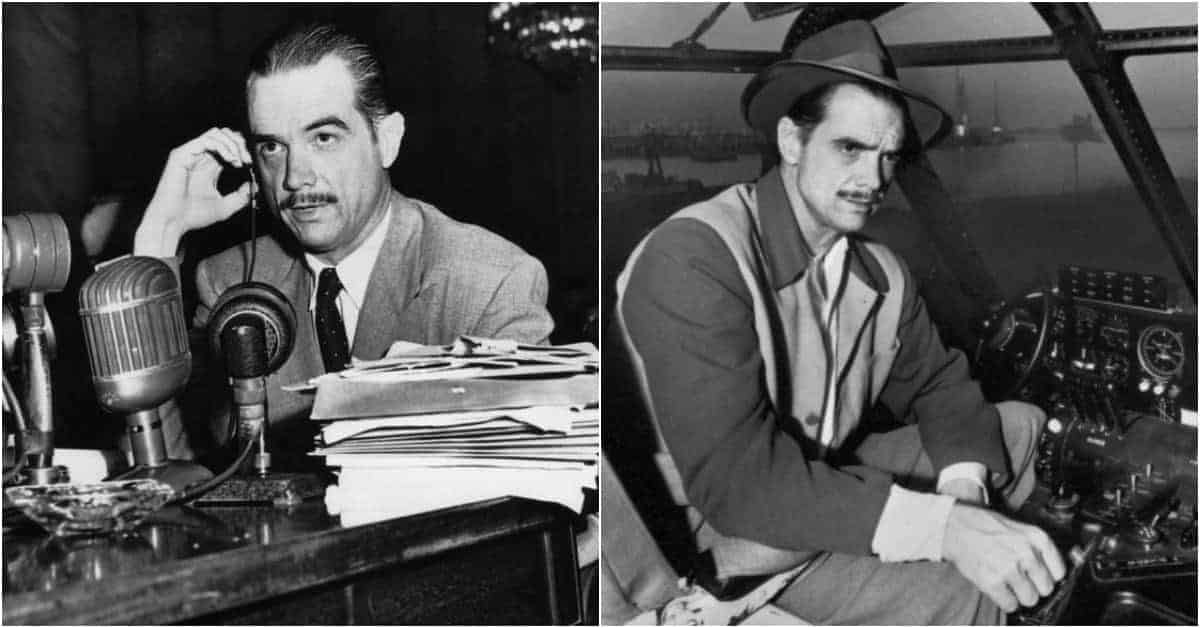Howard Hughes was in many ways larger than life. He was of course fabulously wealthy. In his younger days, he became well known by flaunting his wealth. He was an aviation pioneer setting records for speed and endurance, with motion picture cameras on hand to record his achievements for posterity. He built huge and hugely successful companies including Hughes Aircraft, Hughes Tool Company, Hughes Medical Institute, and Trans-World Airlines.
The list of women he dated at various times included some of the most famous of his era, many of them years and even decades younger than he, including Ava Gardner, Bette Davis, Katharine Hepburn, Rita Hayworth, and Ginger Rogers. He made big movies which became big successes or big failures and then sold movie studios for big profits.
In his later years, he descended into mental illness, suffering from obsessive-compulsive disorder to the extent that he would sort the peas on his plate into order of size before eating them. On one occasion he had his staff put the motion picture Ice Station Zebra into a continuous loop, watching the film over 150 consecutive times while sitting naked. He forbade his staff from speaking to him unless he spoke to them first.
His reclusiveness became legendary as his fabulous wealth became a surreptitious source of funding for secret government projects. One of these was the building of the Glomar Explorer, a project in which Hughes’s name provided cover for the construction of a vessel built to recover a sunken Soviet submarine. Hughes said it was built for geological work.
Hughes has been depicted in fiction and non-fiction books, films, and television specials. His story remains one of controversy, conspicuous consumption, media hype, patriotism, and above all, money. Here are a few lesser-known facts from the life and legend of Howard Hughes.


He personally designed a bra for Jane Russell
In 1941 Hughes was preparing to produce and direct The Outlaw, a western based on the story of Billy the Kid. A young actress named Jane Russell was cast in the female lead, a role which would lead to her becoming a star. Russell was then a little-known starlet, famous more for her figure than her talent. Bob Hope would one day quip that, “Culture is the ability to describe Jane Russell without moving your hands.”
Russell’s measurements were reported as being 38D-24-36 and at a height of 5’7″ she was described in the press of the day as “statuesque.” Hughes intended to use pictures of a provocatively posed Russell as publicity stills for the film, despite the sexual angle having little to do with the story of Billy the Kid.
When Hughes saw the early photos of Russell posed on a stack of hay, he was dissatisfied with the amount and appearance of cleavage apparent, as well as the way the actress’s blouse lay on her body. He designed an underwired push-up bra, having it built without asking Russell for any input regarding size, and demanded that she wear the bra for new photos.
Russell hated the bra, finding it to be uncomfortable as well as unflattering, and while she posed for new photos, she did so without wearing Hughes’s creation. Instead, the actress simply adjusted one of her own bras by adding supportive padding and tightening the straps. The resultant photos became famous, and a popular pinup for GIs during World War II.
Hughes was likely never told of his star’s rejection of his attempt at creating lingerie, given his staff’s fear of incurring the wrath of the boss. The photographs became famous, but they also became infamous, leading to a lengthy battle between Hughes and the Hollywood censors of the day over the footage featuring Russell’s breasts.
In order to have the film released Hughes started a negative publicity campaign, creating an outcry to have the film banned. All publicity being good publicity, the studio soon recognized that the film would attract an audience, and after about forty feet of film was excised to satisfy the morals of the censors it was released in 1943. It was soon pulled again due to moral outrage and re-released in 1946 after the GIs came home when it became a hit.

